Explanation of the importance of Microsoft Windows as an operating system
Microsoft Windows is one of the most widely used OSes, used by individuals, businesses, and organizations for a wide range of purposes. It is compatible with a variety of hardware and software, user-friendly, customizable, security features, enterprise-level capabilities, and technical support.

Logo of Microsoft Window
A brief overview of the History of Windows
The history of Windows dates back to the 1980s when Microsoft began developing an operating system called "Interface Manager". Windows 8 and 10 were designed to work with touchscreens and mobile devices. Windows 11, released in 2021, features a redesigned Start menu, new snap layouts, and Microsoft Teams integration. The future of Windows is expected to focus on making it more efficient, secure, and user-friendly.
Purpose of the article
An article providing a detailed explanation and full guide about Microsoft Windows is a valuable resource for anyone looking to improve their knowledge and skills in using the popular operating system. It can cover topics related to Windows, such as its history, features, and functions, as well as how to perform specific tasks.
Overview of Microsoft Windows
Explanation of what Windows is?
Microsoft Windows is an OS developed by Microsoft Corporation that provides a GUI and built-in programs and tools, including Office, Internet Explorer, and Windows Media Player.
Different versions of Windows and their features
Microsoft Windows has had several versions, each with its features and capabilities.
1.Windows 1.0
The first version of Windows was released in 1985, which introduced a graphical user interface (GUI) to IBM-compatible personal computers.

Logo of MS Windows 1.0
2.Windows 2.0
Released in 1987, this version added support for more colors and improved performance.

Logo of Microsoft Windows 2.0
3.Windows 3.0
Released in 1990, Windows 3.0 introduced Program Manager and File Manager and was the first widely successful version of Windows.

Logo of Microsoft Windows 3.0
4.Windows 95
Microsoft introduced the Start menu, taskbar, and plug-and-play device compatibility in Windows 95.

Logo of Microsoft window 95
5. Windows 98
Released in 1998, Windows 98 introduced Internet Explorer 4.0 and support for USB devices.

Logo of MS Windows 98
6.Windows 2000
Released in 2000, Windows 2000 was designed for business use and introduced Active Directory, an enhanced file system, and improved security features.
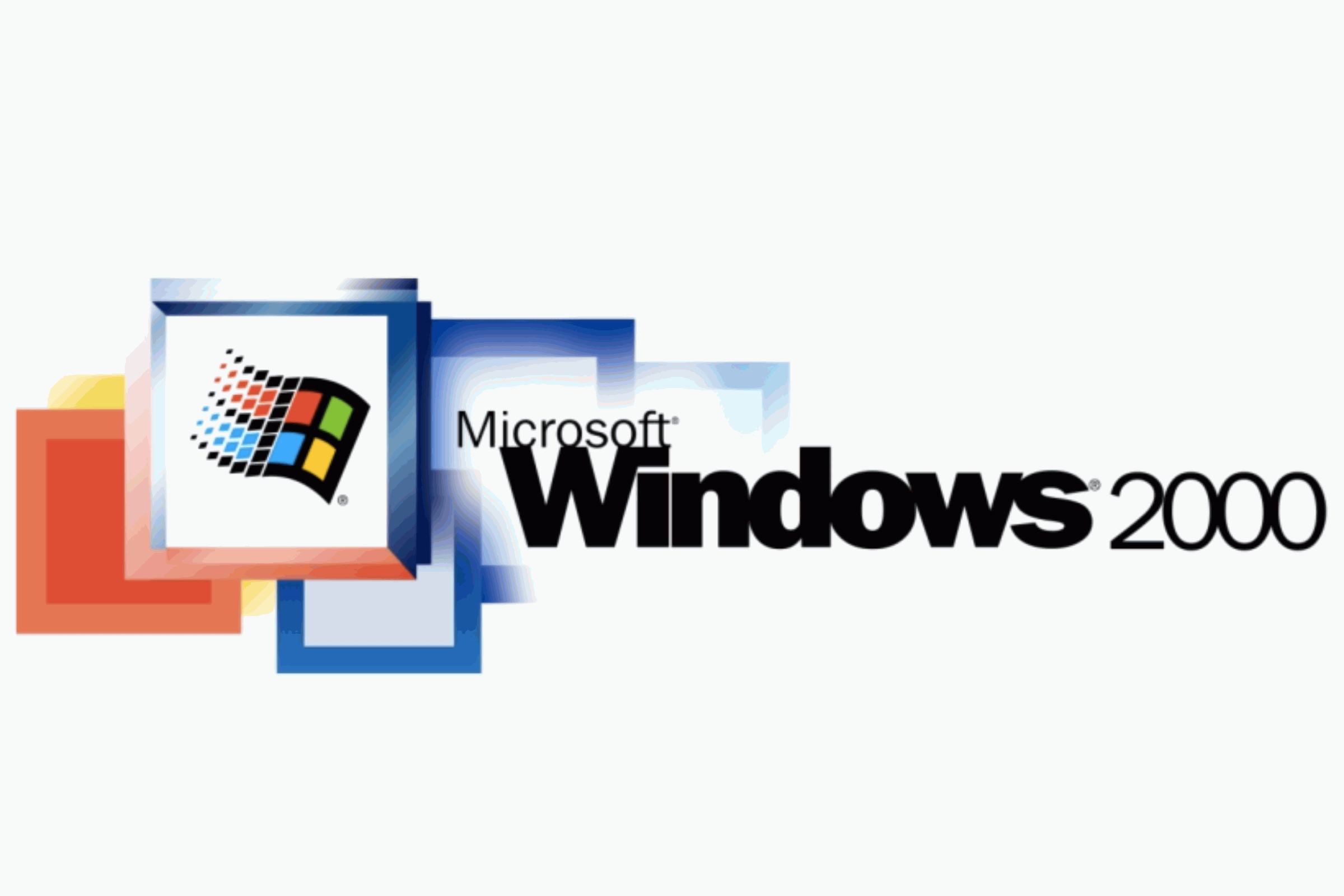
Logo of Microsoft 2000
7.Windows ME
Released in 2000, Windows ME was designed for home use and introduced System Restore and Windows Media Player 7.
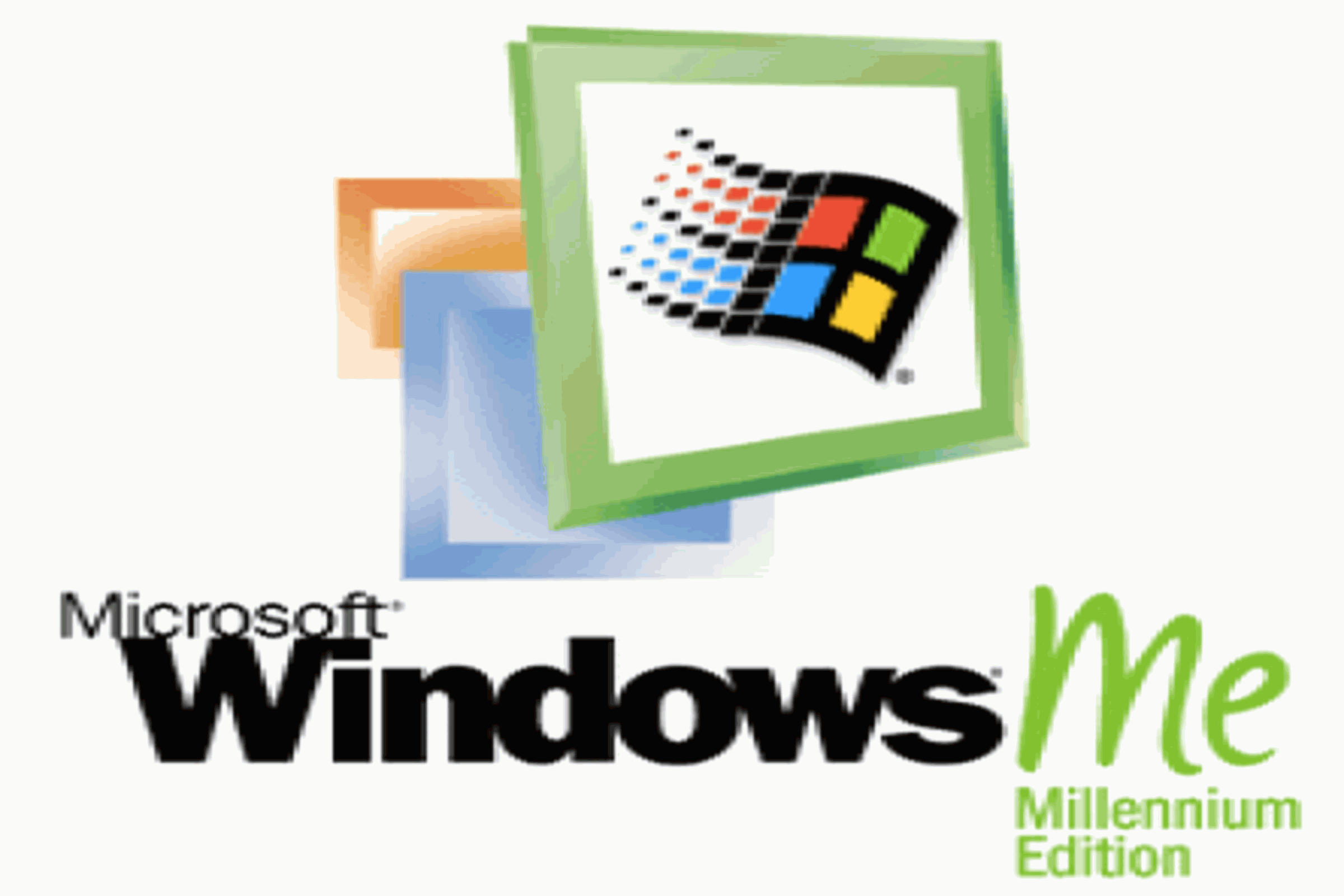
Logo of MS Windows ME
8.Windows XP
Windows XP was a popular operating system with new features such as multimedia support, wireless networking, and user accounts.

Logo of Microsoft windows xp
9.Windows Vista
Windows Vista was a major overhaul of the Windows operating system, featuring a redesigned user interface, enhanced security, and the Windows Aero desktop motif.

Logo of Microsoft Windows Vista
10.Windows 7
Windows 7 improved performance, user interface, and multimedia capabilities, making it a popular OS.
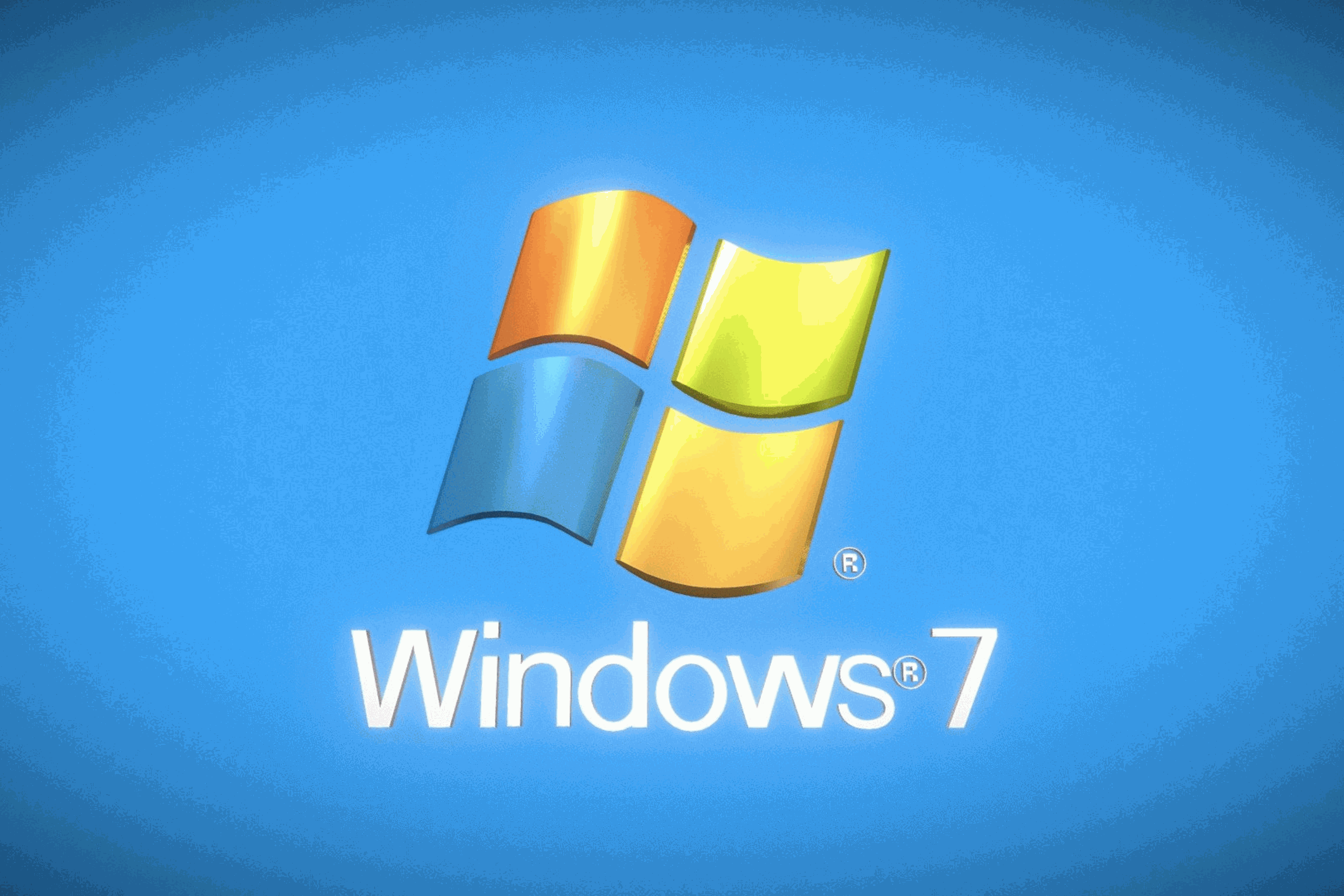
Logo of Microsoft Windows 7
11.Windows 8
Windows 8 introduced a tile-based Start screen, and improved speed, security, and search capabilities for touchscreens and mobile devices.

Logo of Microsoft Windows 8
12.Windows 8.1
Released in 2013, Windows 8.1 addressed many of the criticisms of Windows 8 and reintroduced the Start button.
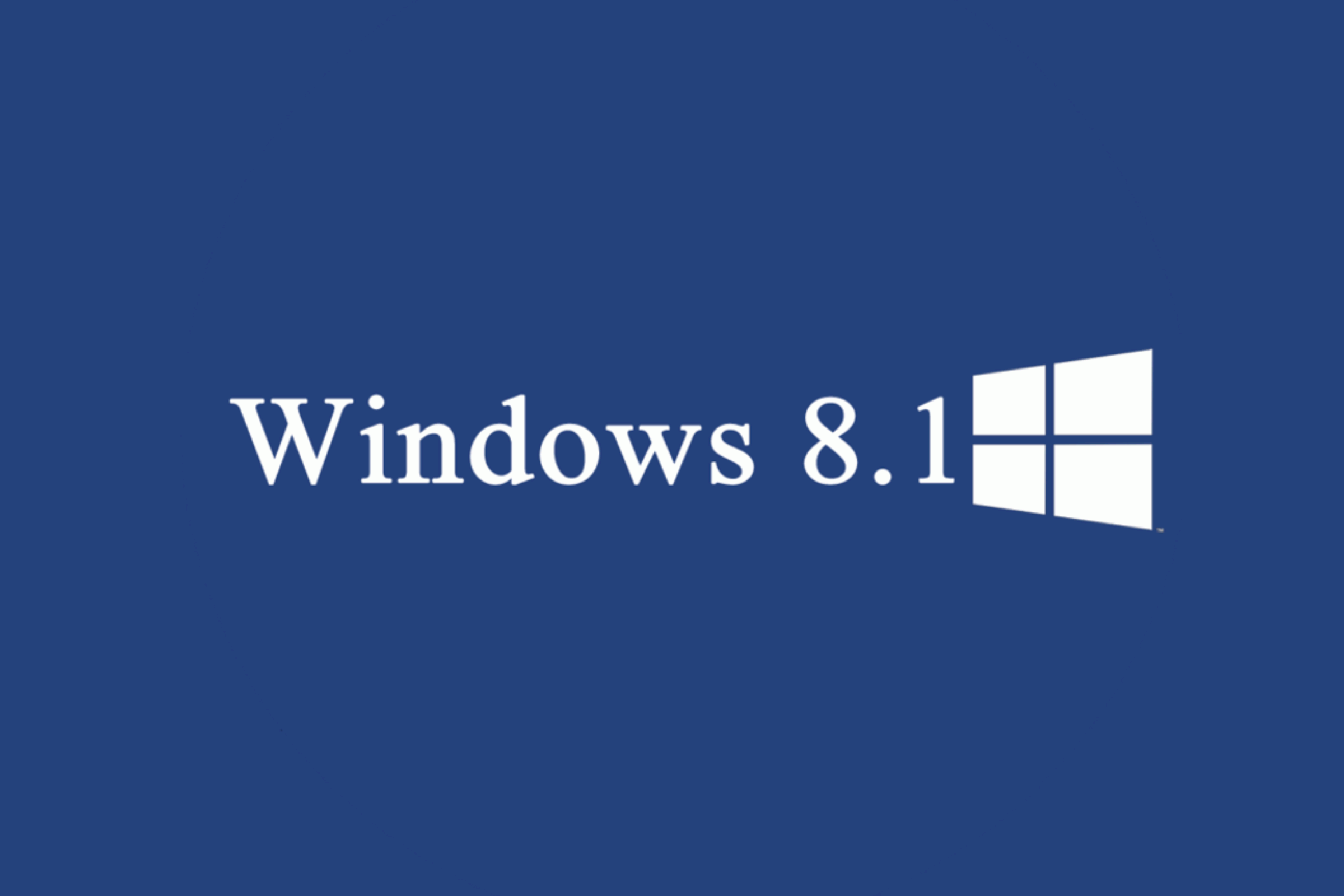
Logo of Microsoft Windows 8 .1
13.Windows 10
The most recent version of Windows includes new features such as the Start menu, virtual desktops, Edge browser, Cortana, Windows Hello, and UWP compatibility.

Logo of Microsoft 10
14.Windows 11
Microsoft Windows 11 is a modern, streamlined, and user-friendly version of the Windows operating system with improved performance and battery life.
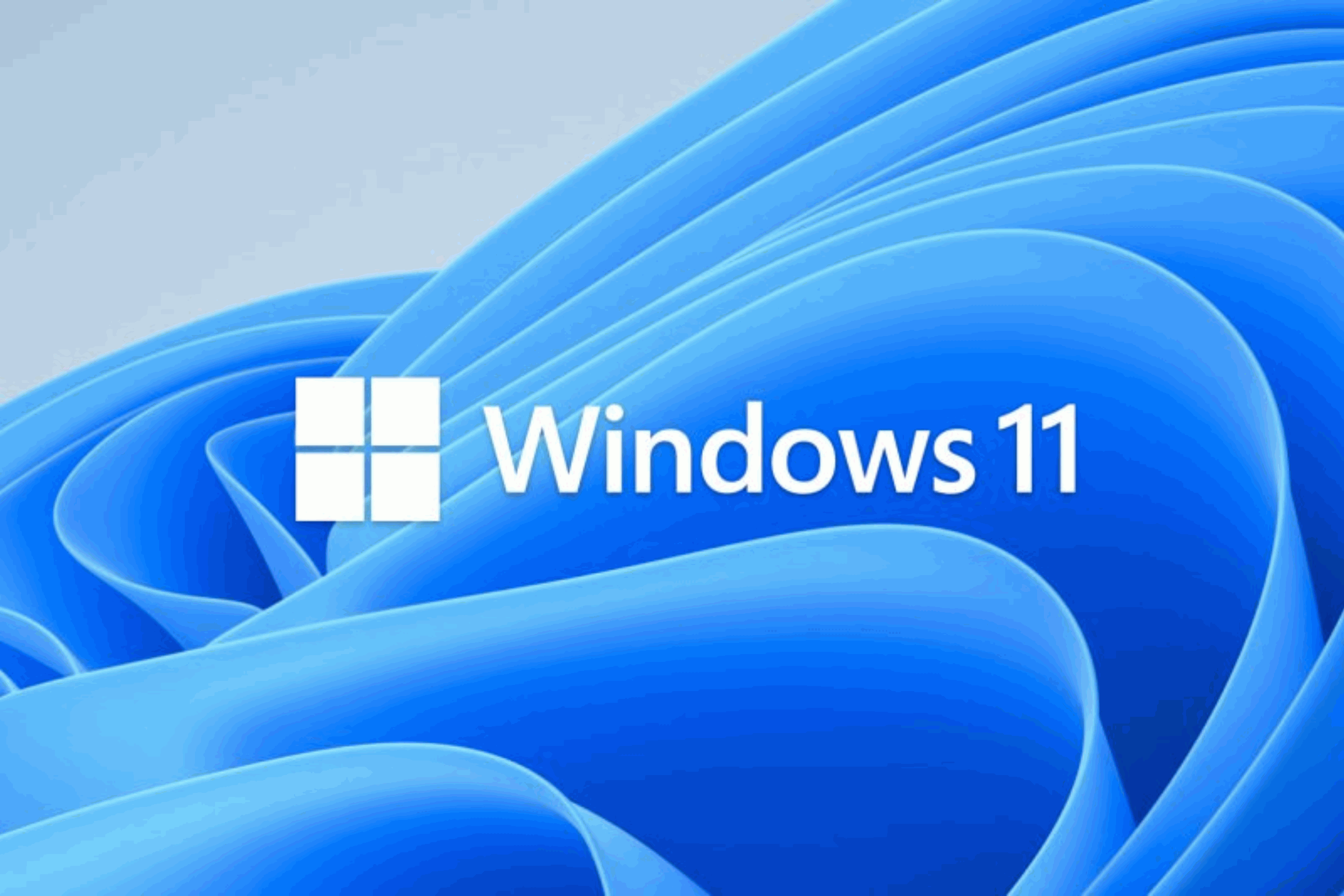
Logo of Microsoft Windows 11
Overall, each edition of Windows included new features and capabilities to make the operating system more powerful, efficient, and user-friendly.
Windows updates and their importance
Microsoft releases Windows updates regularly to repair problems, improve security, and bring new features. These updates are essential for keeping your computer running smoothly and securely, as they can help protect against malware, viruses, and other cyber dangers. It is important to check for and apply updates regularly to ensure that your computer runs smoothly and securely.
Getting Started with Windows
How to install Windows?
Get the Windows ISO file from a reliable source.
Create a bootable USB or DVD using a program.
Restart your computer after inserting the bootable disc.
Modify BIOS settings to boot from USB or DVD, if necessary.
Follow the on-screen prompts to begin Windows installation.
Enter the product key and select installation settings for language and partitioning.
Let the installation procedure finish. This might take a while.
Restart and log in to Windows to install drivers and updates.
Introduction to the Windows desktop
Windows desktop provides access to files, directories, and applications.
Start menu and taskbar
The Start menu in Windows 11 is centered and displays suggested programs and recent files, while the taskbar features pinned apps, system icons, Snap Layouts, and Task View.

Explanation of the Start menu and Taskbar in Microsoft Windows 11
Customizing Windows
Personalizing Windows
You may customize Windows by changing the desktop wallpaper, theme, colors, and audio. Here's how it's done:
Right-click on the desktop and choose "Personalize" from the option that appears.
Choose a new background picture, slideshow, or solid color.
Personalize the theme by selecting from the given choices or by creating your own.
Adjust the accent colors to your liking.
Make changes to the sounds for notifications, system alarms, and other events.
Customize the lock screen and sign-in screen.
Choose whether to display or conceal taskbar icons.
Change the text size and other display options.
These instructions may differ somewhat depending on the version of Windows you are running.
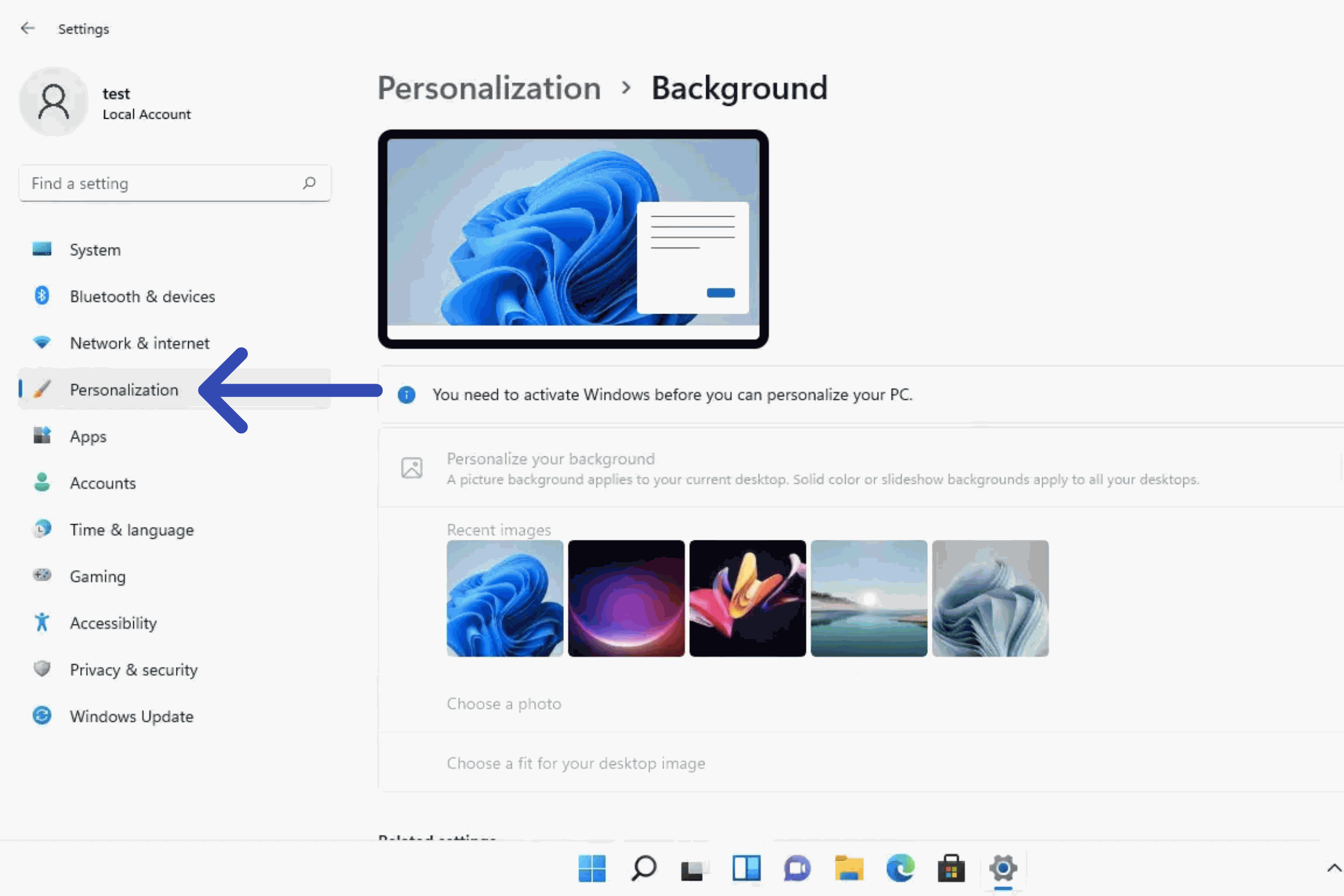
Explanation of how to personalize Windows 11
Changing desktop backgrounds and theme
Follow these instructions to change the desktop wallpaper and theme in Windows 11:
Right-click on the desktop and choose "Personalize" from the option that appears.
Choose a new wallpaper or background picture, or a solid color, under "Background."
Choose a new accent color or "Custom" to build your own under "Colors."
Choose a new theme or build a custom theme by picking your chosen background and accent colors under "Themes."
To further personalize your theme, go to "Advanced" under "Themes" and change options like window border color and transparency.
You can get to these options by heading to Settings > Personalization or by clicking the "Customize" icon in the Start menu.
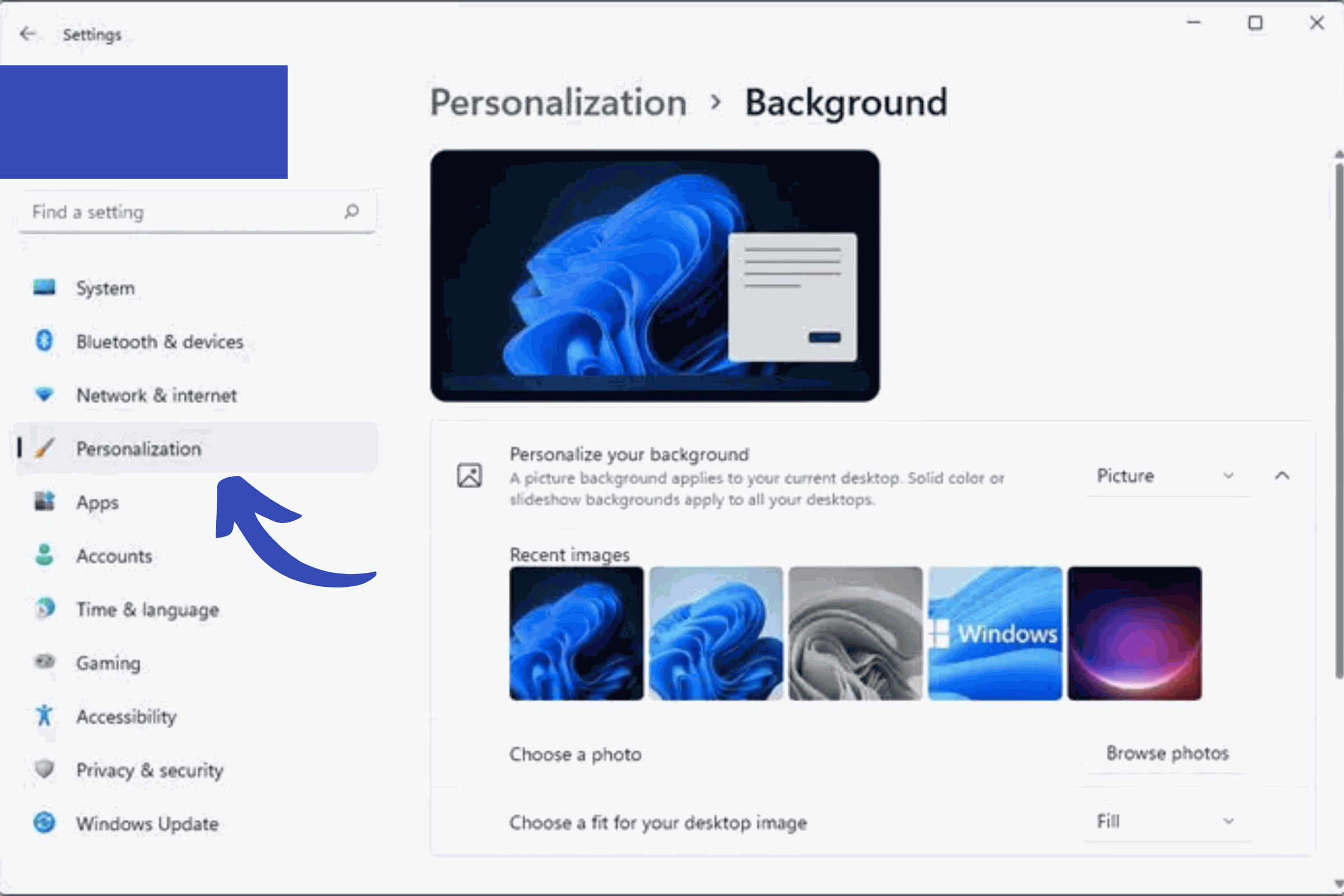
Changing desktop backgrounds and themes in Microsoft Windows 11
Customizing the taskbar and Start menu
Follow these instructions to modify the taskbar and Start menu in Windows 11:
Changing the Taskbar:
Choose "Taskbar settings" from the context menu when you right-click on the taskbar.
Choose which icons, such as the Windows or search icons, should show on the taskbar.
Toggle on or off features including taskbar alignment, tiny taskbar buttons, and app notification badges.
Select which programs to show or hide from the taskbar, or pin new apps to it.
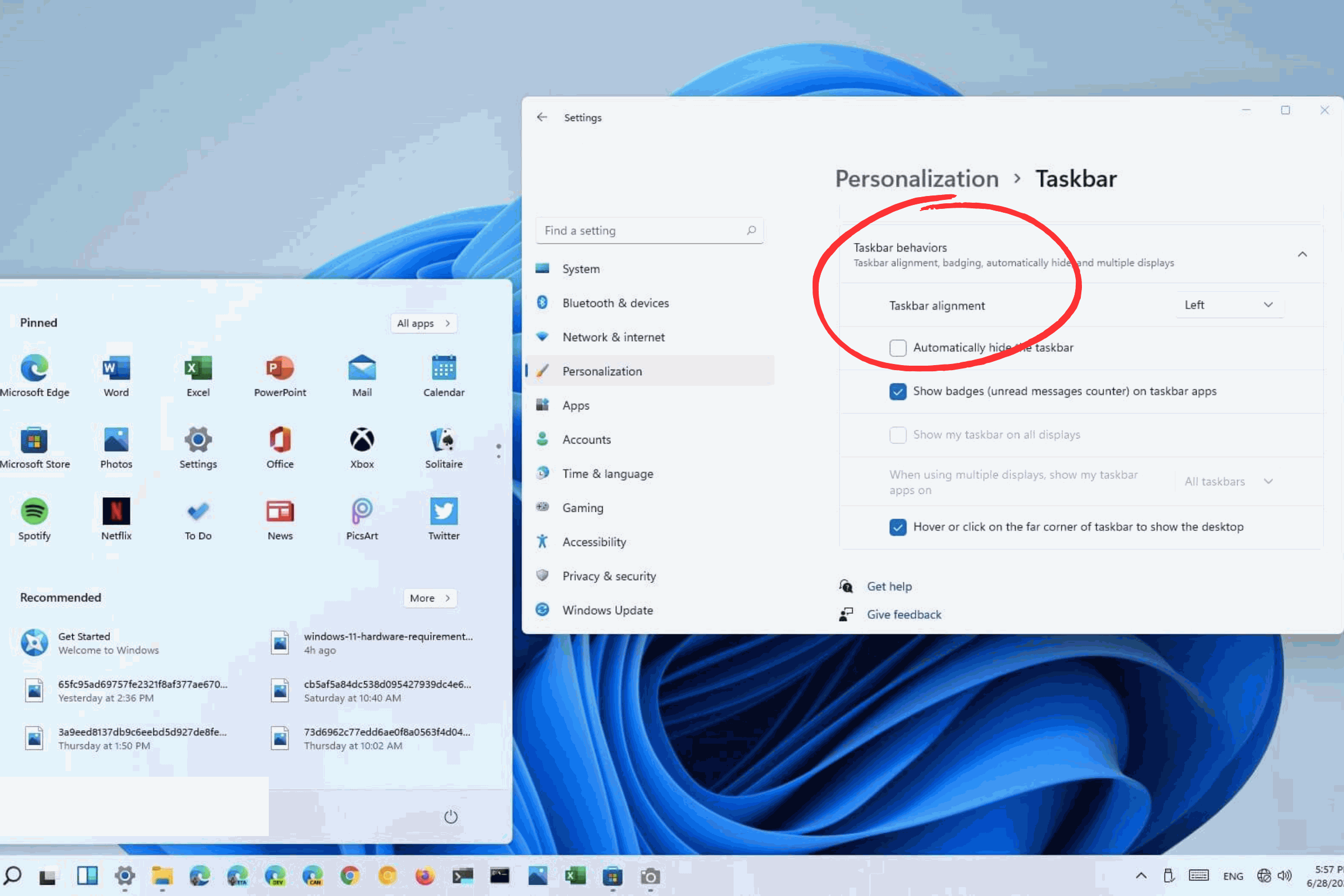
Changing the Taskbar in Microsoft Windows 11
Changing the Start menu:
Choose "Settings" from the Start menu by right-clicking.
You may choose which folders and programs to display in the Start menu.
Toggle features like the "Recommended" area, recently installed applications, and the option to show recently accessed things in Jump Lists on or off.
Change the Start menu layout by selecting "Centered" or "Left-aligned," or resize the Start menu to your preference.
These options are also available by heading to Settings > Personalization > Taskbar or Start.
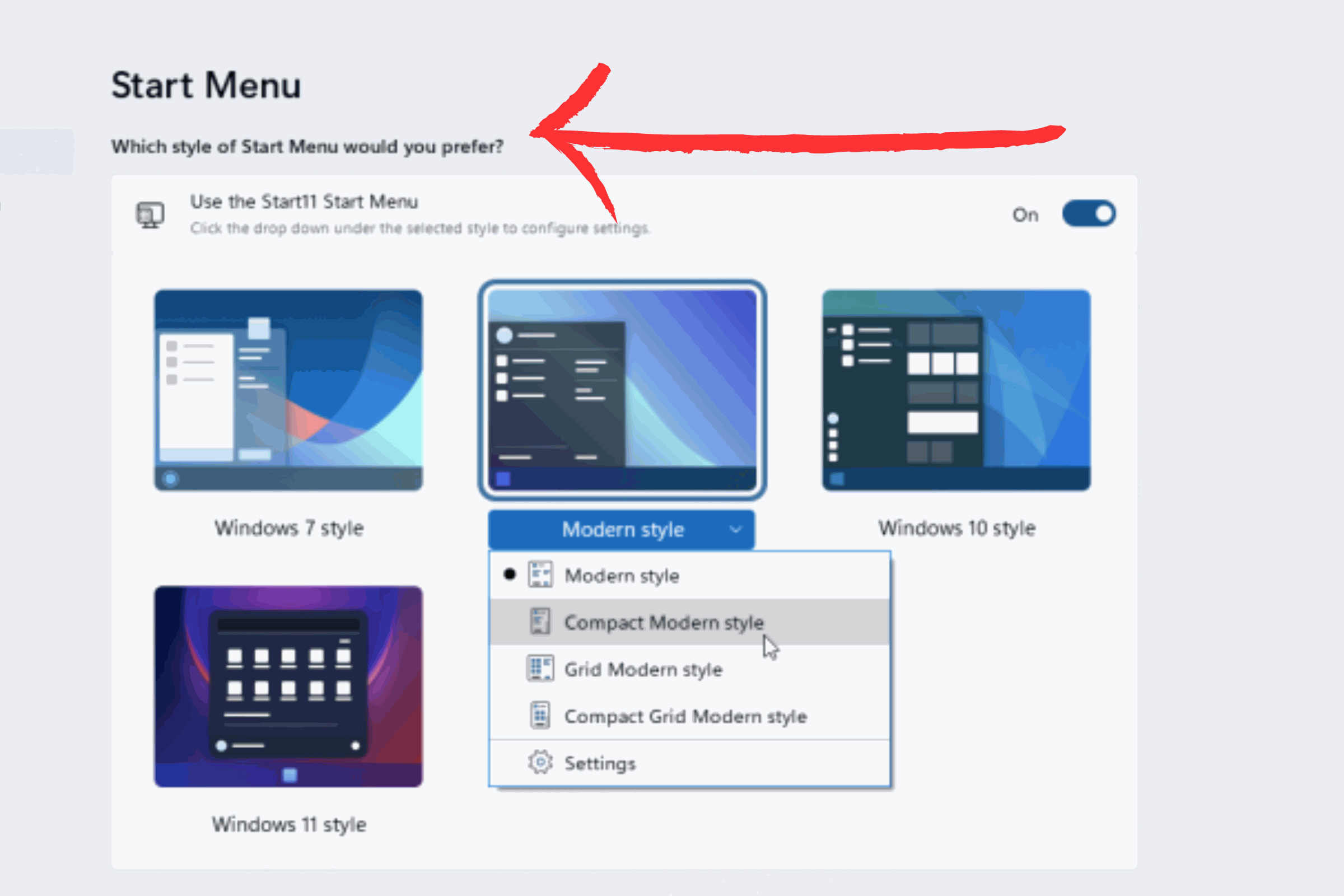
Changing the Start menu in Microsoft Windows 11
Windows Apps and Features
Explanation of built-in Windows apps such as Microsoft Edge, Mail, and Photos
Windows 11 comes with several built-in programs that perform a range of duties, such as online surfing, email, and picture management:
1.Microsoft Edge:
Windows 11's web browser provides secure and reliable access to Microsoft services.

Microsoft Edge Logo
2.Mail:
The built-in email program allows users to manage multiple email accounts in one location.

Mail in Microsoft Windows 11
3.Pictures:
The Photographs app helps users manage and edit their images and videos.

Picture in Microsoft Windows 11
Overview of Windows features
Windows has several tools that can boost productivity and improve user experience. Following is a rundown of three of these features:
1.Cortana
Cortana is a virtual assistant that helps users with tasks such as reminders, weather, and web browsing.

Cortana in Microsoft Windows 11
2.Hello, Windows:
A biometric authentication tool enables users to log in to their Windows device using their face, fingerprint, or PIN.
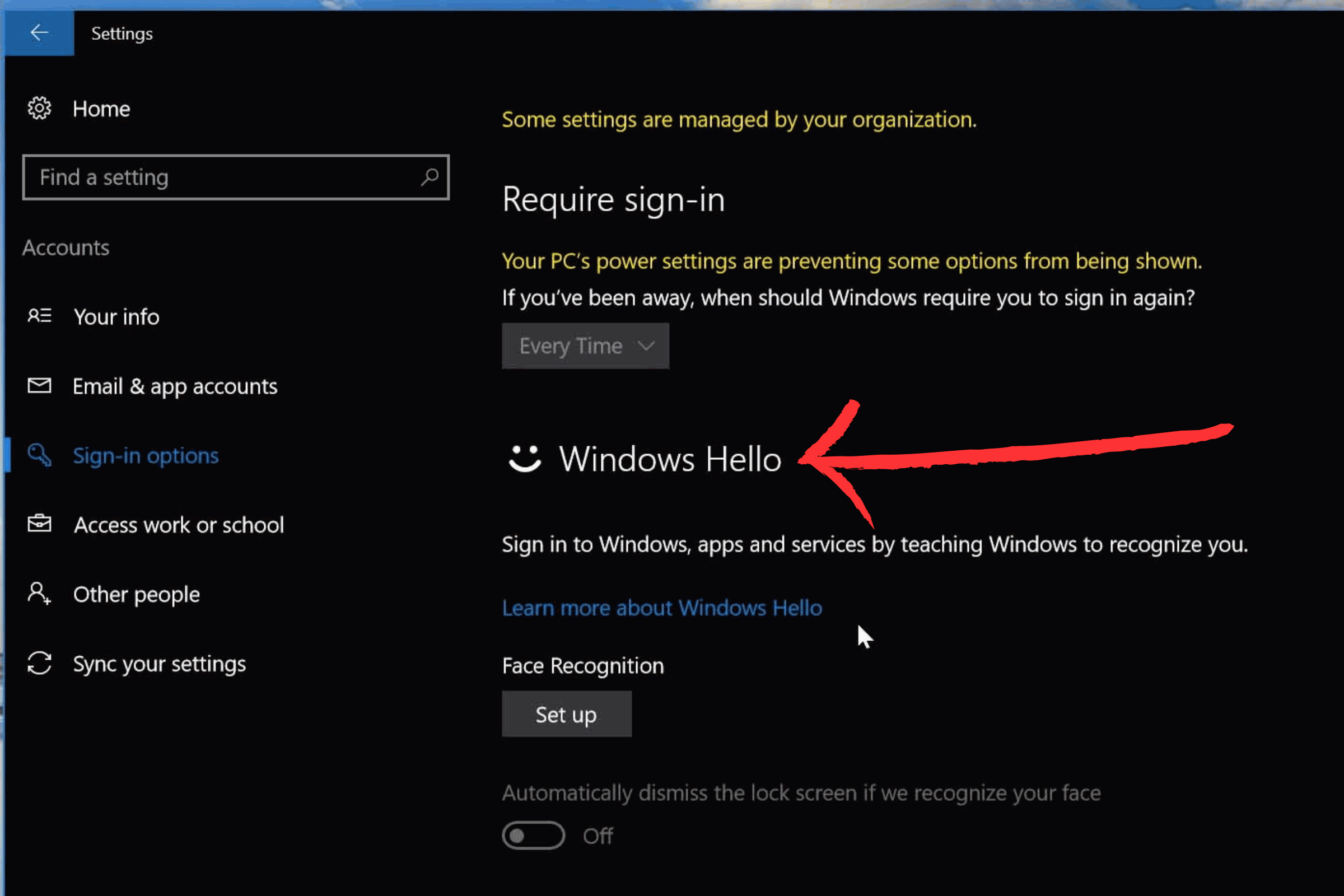
Setting up Window hello in Microsoft window 11
3.Windows Ink:
Users can use a digital pen or stylus to write, draw, or highlight on the screen, supporting Microsoft products.
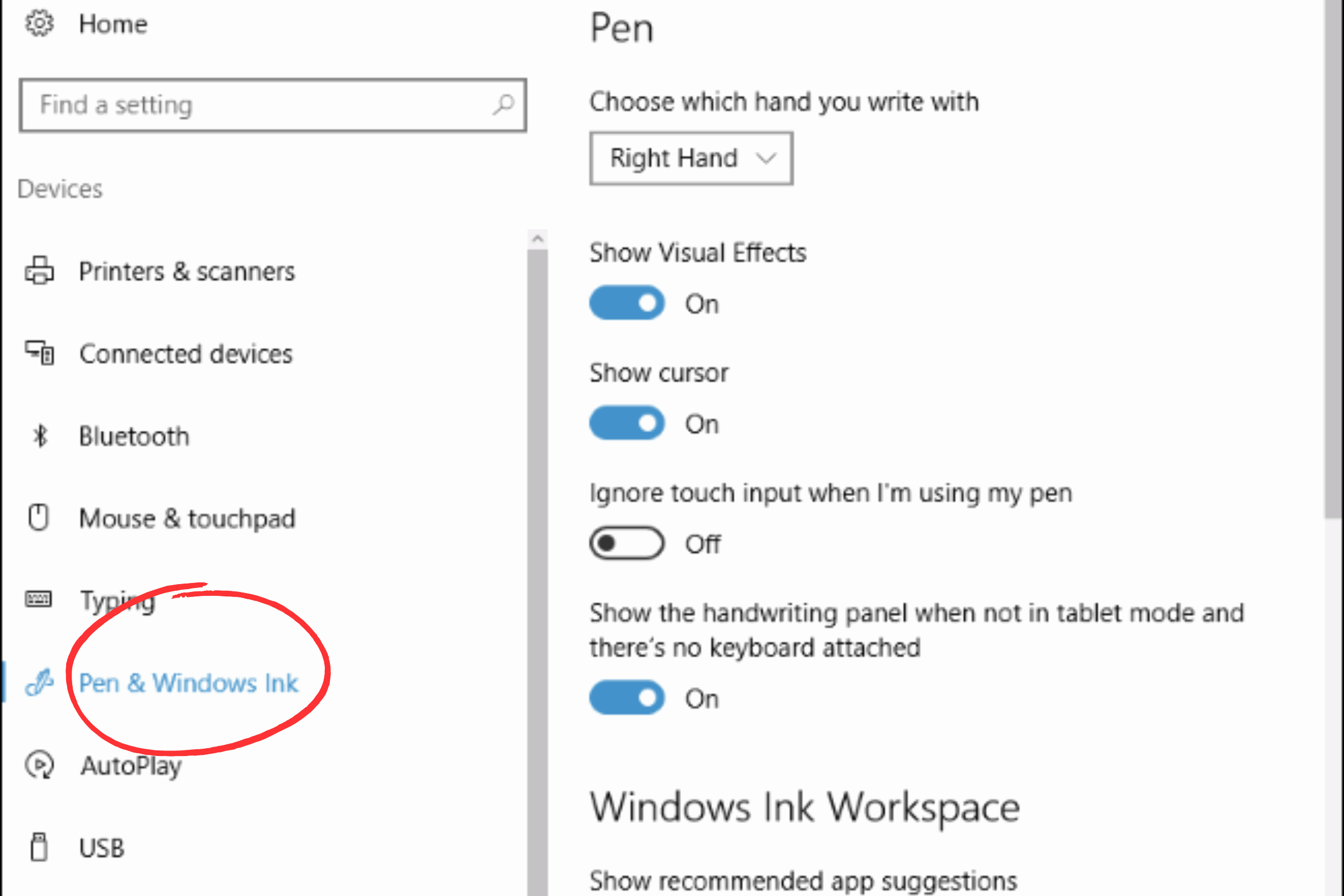
Windows Ink in Microsoft Windows
Managing Files and Folders in Windows
How to create, move, and delete files and folders?
1. Create Files and Folders:
Follow these instructions to create a new file or folder in Windows:
Right-click on the folder or on the desktop where you want the file or folder to be created.
Click "New" and then select "Folder" or "File."
Specify a name for the folder or file and hit "Enter."

Create Files and Folders in Microsoft window 11
2. Moving Files and Folders
On Windows, use these procedures to relocate a file or folder:
Drag the file or folder to the desired folder or disc by clicking and dragging.
Drop the file or folder in the new location by releasing the mouse button.
Instead, right-click the file or folder and choose "Cut," then browse to the target folder or disc, right-click the folder or an empty space, and choose "Paste."
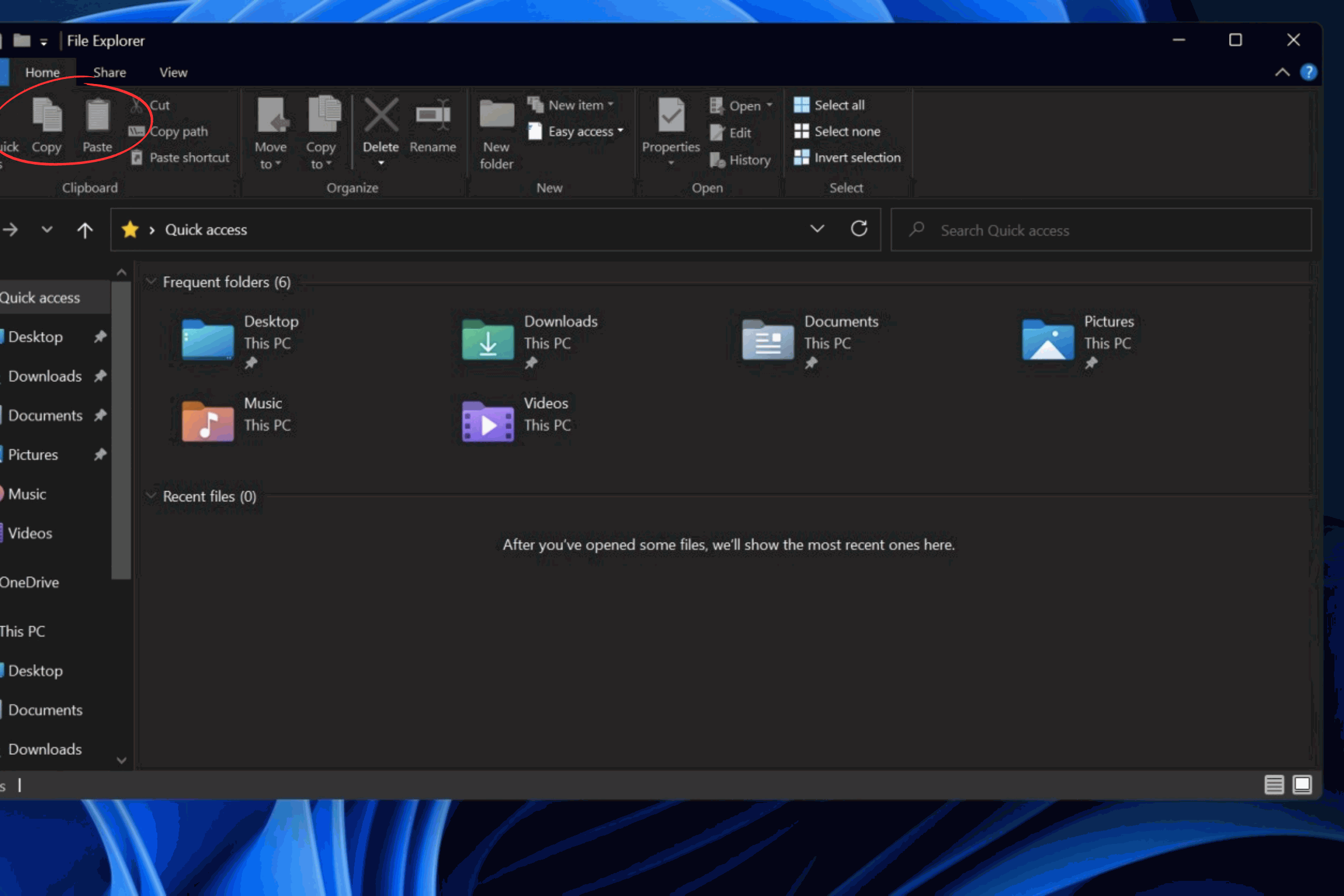
Moving Files and Folders in Microsoft Window
3. File and Folder Removal:
Follow these instructions to remove a file or folder in Windows:
Choose the file or folder to be deleted.
Use the "Delete" key or right-click and choose "Delete."
Confirm the deletion in the resulting dialogue box.

Deleting files in Microsoft Windows 11
Overview of file organization in Windows
Windows organizes data into folders, which can include subfolders and files. To keep things organized, you may make new folders and transfer files into them. It's a good idea to give files and folders meaningful and consistent names.
Using a Search Engine:
Use these methods to search for files and directories on Windows:
At the taskbar, click the magnifying glass icon.
Enter the name of the file or folder you wish to find.
Choose the desired file or folder from the search results.
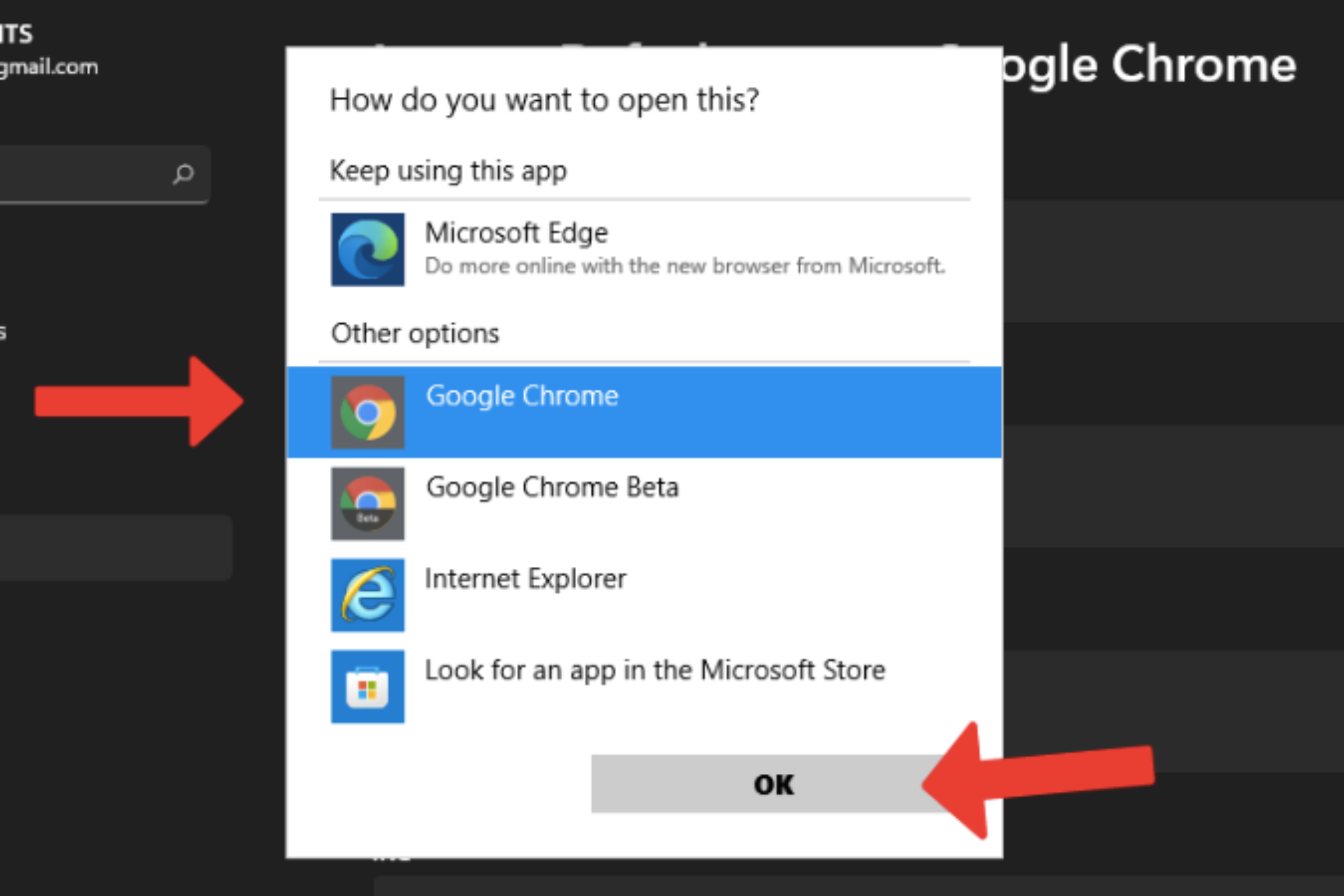
Search Engine in Microsoft Window
Exploring Windows Settings
How Can I Access Windows 11 Settings?
Make Use of Keyboard Shortcuts.
To access the app, use the "Windows key + A" keyboard shortcut to open the "Quick Settings" flyout and then select the Settings (gear) button. You may also reach certain pages on the Settings app by right-clicking the "clock" or "network" icons in the System Tray.
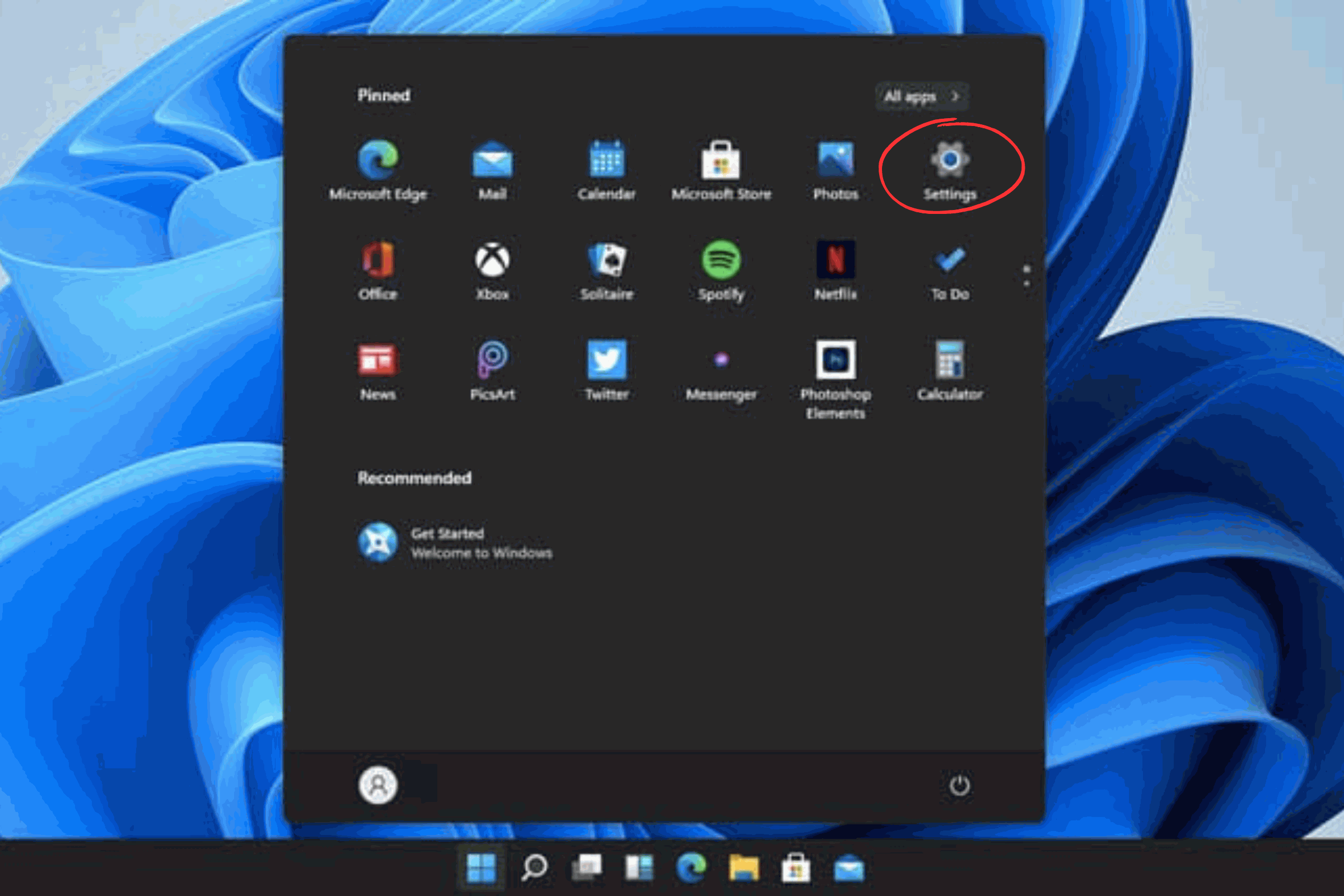
Setting in Microsoft Windows 11
Windows Settings app in Windows 11
The Windows Settings app allows users to customize various system settings, such as display, sound, notifications, and power management.
System: here you can manage display, sound, notifications, power settings, and more.
Devices: here you can manage printers, Bluetooth devices, and other connected devices.
Network & Internet: here you can manage Wi-Fi and Ethernet connections, VPN settings, and more.
Personalization: here you can customize your desktop background, lock screen, and more.
Accounts: here you can manage your Microsoft account and sign-in options.
Time & Language: here you can manage language settings, date and time, and more.
Privacy: here you can manage privacy settings for your device and apps.
Overall, the Windows Settings app is a useful tool that allows users to easily manage and customize various system settings in Windows.
Windows Maintenance and Troubleshooting
Windows Maintenance and Troubleshooting involve performing routine maintenance tasks and resolving common issues in the Windows operating system.
You can try booting into Safe Mode or using the Windows Recovery Environment to troubleshoot and repair startup issues.
1.Updating Windows:
Keeping Windows up to date is essential for optimal performance and security. Windows Update is a built-in feature that allows you to download and install updates automatically or manually.
2.Running Disk Cleanup and Disk Defragmenter:
Disk Cleanup helps to free up disk space by deleting temporary files and other unnecessary files, while Disk Defragmenter optimizes the placement of files on the hard drive for improved performance.
3.Scanning for Malware:
Windows Defender is a built-in antivirus program that can scan your system for malware and viruses. You can also use third-party antivirus software.
4.Resolving Driver Issues:
Drivers are software that allows your computer's hardware to communicate with the operating system. If a driver is outdated or corrupted, it can cause issues. You can update drivers through Windows Update or the device manufacturer's website.
5.Running System File Checker:
System File Checker (SFC) is a built-in tool that scans for and repairs corrupt or missing system files.
6.Resetting or Refreshing Windows:
If all else fails, you can reset or refresh Windows to its default state, which can fix many problems. This option will remove all your files, settings, and apps, so be sure to back up your important data before doing so.
By performing regular maintenance and troubleshooting tasks, you can help ensure that your Windows system runs smoothly and stays secure.
Windows Security
Windows Security is a built-in security feature in Windows operating systems that protects against viruses, malware, and other cyber threats. It includes tools and features such as Windows Defender Antivirus, Firewall, BitLocker, Windows Hello, User Account Control, Windows Sandbox, and Windows Security Center. By keeping the system up to date and using built-in security tools, users can help protect their system from viruses, malware, and other cyber threats.
Windows Productivity and Collaboration Tools
Overview of Microsoft Office applications
Windows offers a variety of productivity and collaboration tools to help individuals and teams work more efficiently.
1.Microsoft Office Suite
Microsoft Office is a collection of productivity tools designed to help create and edit documents, spreadsheets, presentations, and emails.

Microsoft Office Suite
2.OneDrive
OneDrive is a cloud-based storage service that allows users to store, share, and access files from anywhere.
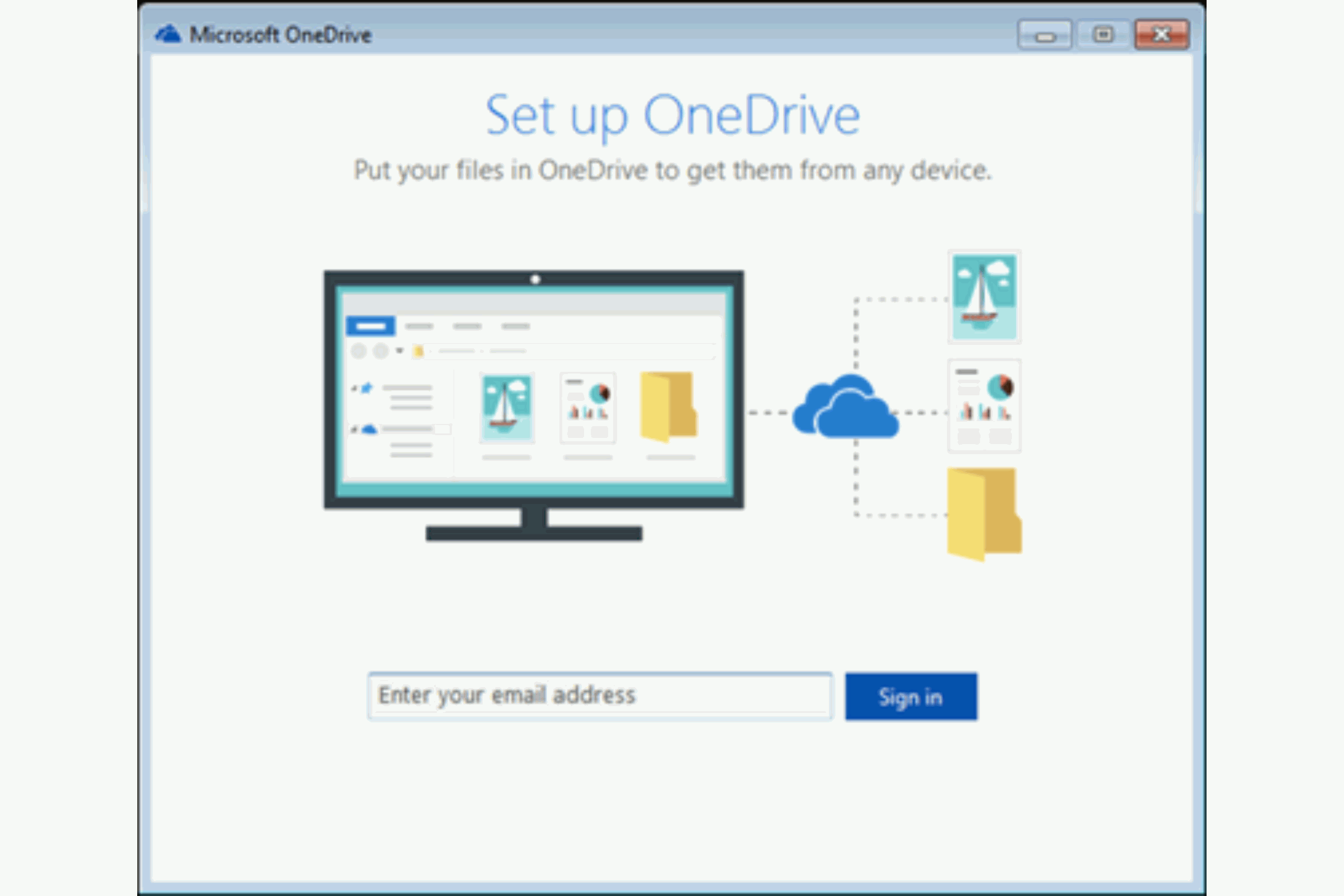
OneDrive in Microsoft Window
3. Skype
Skype is a communication tool that allows users to make voice and video calls, send instant messages, and share files.

Skype on Microsoft Window
4. Microsoft Teams
Microsoft Teams enables teams to communicate, share files, hold virtual meetings, and collaborate in real time.
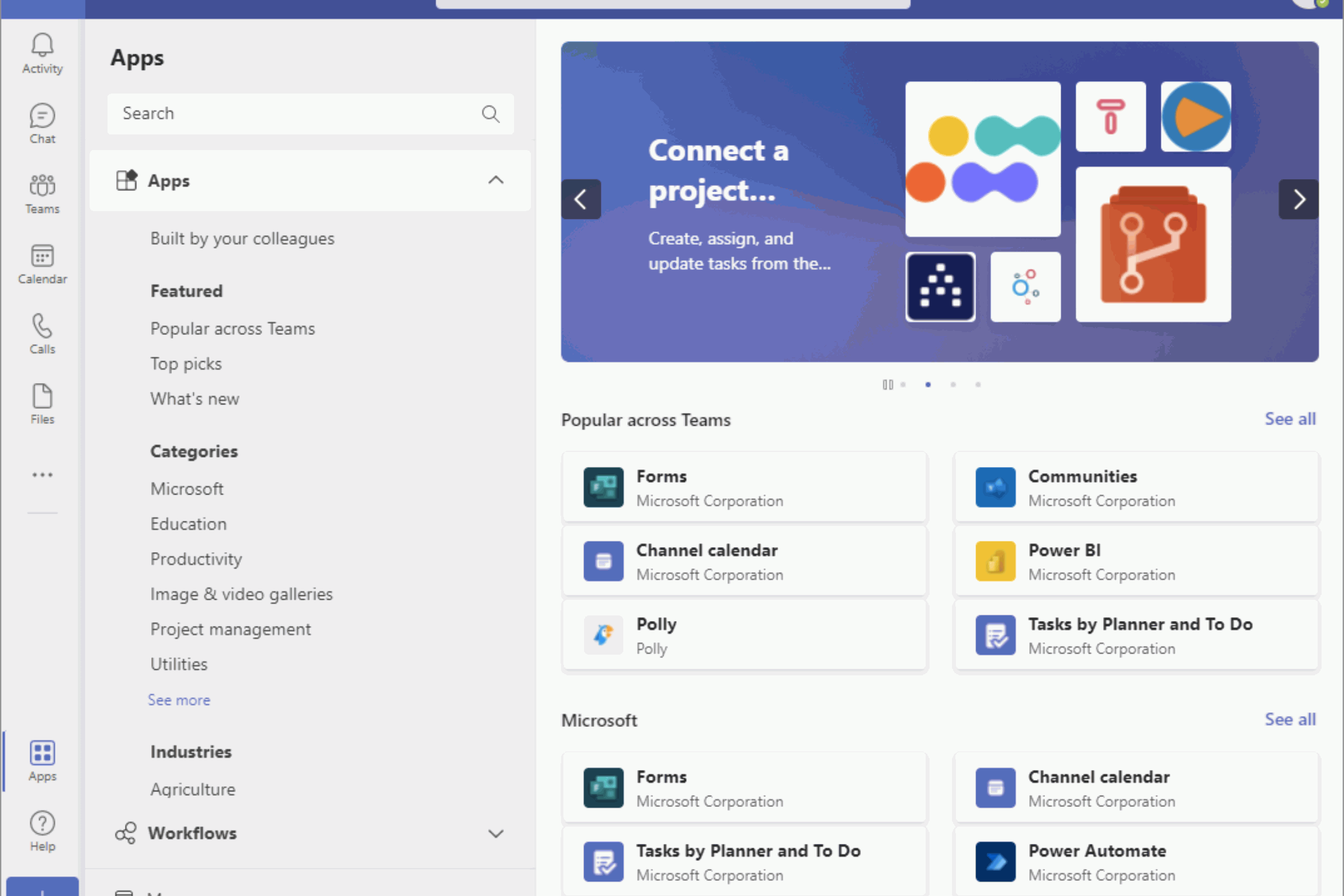
Microsoft team in Microsoft Window
5. OneNote
OneNote is a digital note-taking application that allows for collaboration and organization of notes, drawings, and screenshots.

One note in Microsoft Window
6. Microsoft Whiteboard
Microsoft Whiteboard is a digital canvas that allows teams to collaborate on ideas and brainstorm together in real-time.
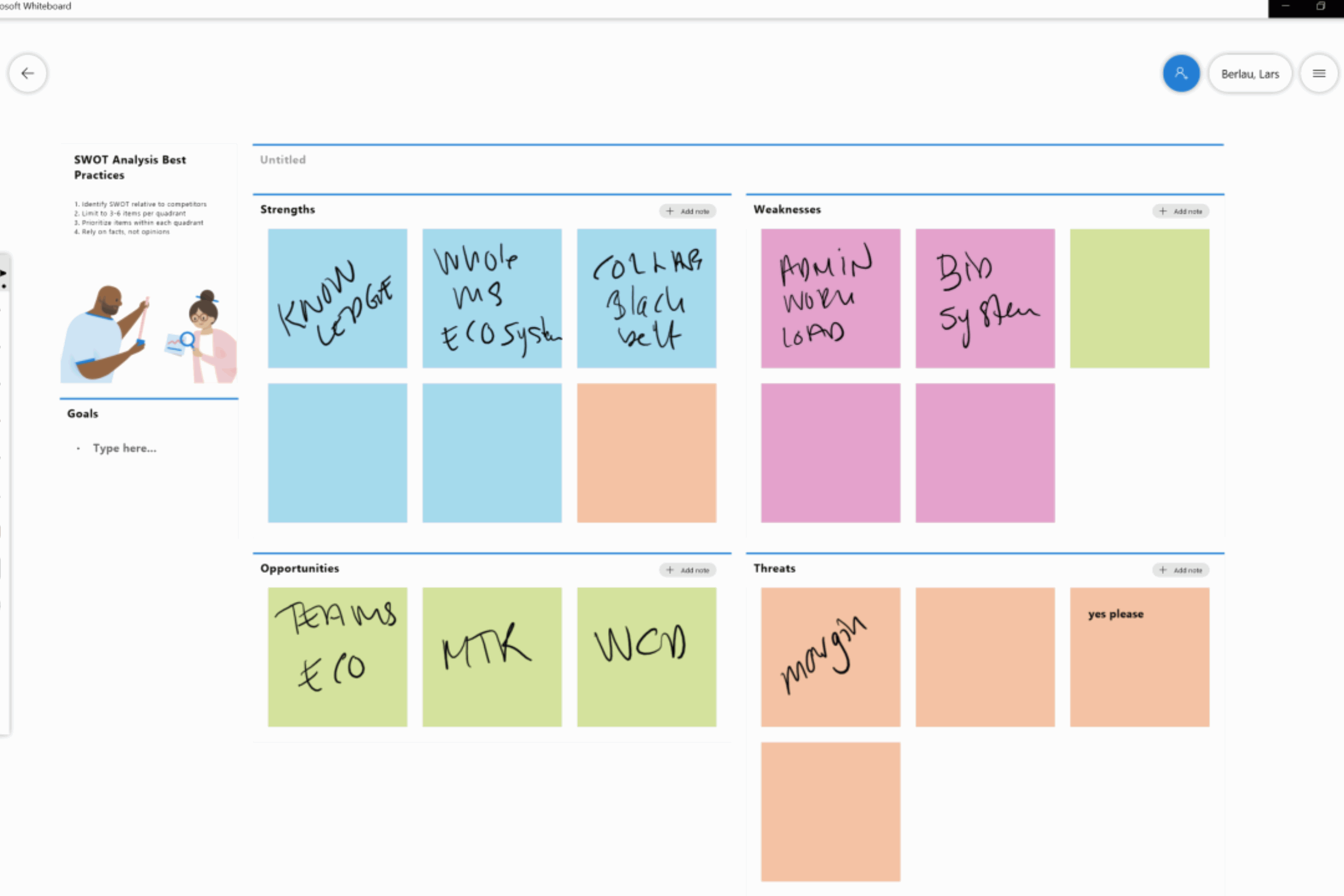
Microsoft window whiteboard
7. Windows Terminal:
Windows Terminal enables developers and power users to access multiple command-line tools and shells in one place.
These Windows productivity and collaboration tools can help individuals and teams work more efficiently and effectively, whether working remotely or in an office setting.
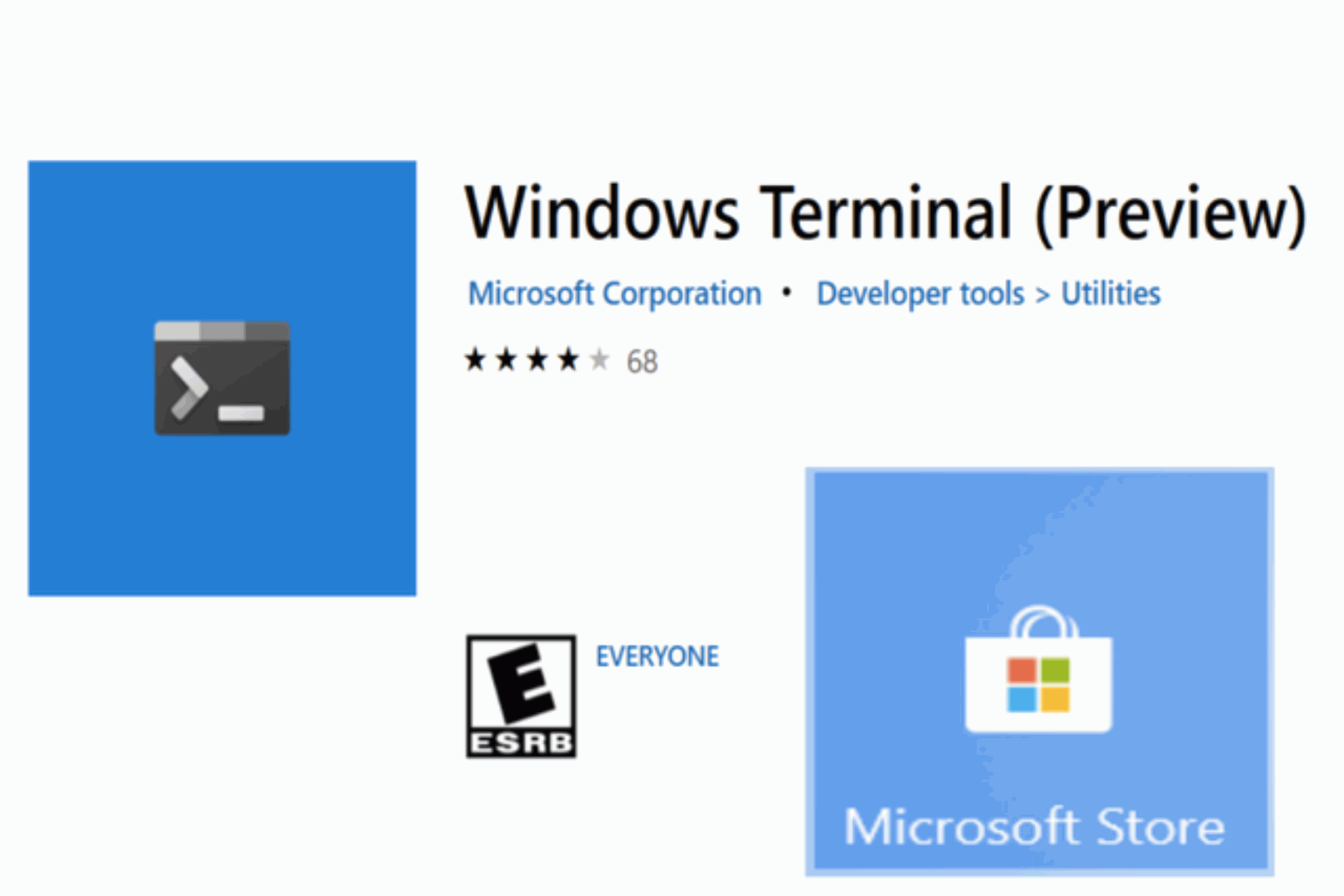
Microsoft Windows terminal
Importance of Windows for personal and professional use
Windows is a widely used operating system that offers a range of features and functionalities for both personal and professional use. It has been around for over three decades and is familiar to many people, making it easier to use for personal tasks. It is also compatible with a wide range of software applications and hardware devices, making it a popular choice for businesses and professionals. It also offers customization options to personalize desktops, taskbars, and other features.
To conclude, Microsoft Windows is in detail, covering its history, different versions, features, and importance for personal and professional use. It explores the evolution of the operating system and its key features, such as the Start menu, Task Manager, Settings app, and Windows Security. It also offers a range of productivity and collaboration tools, such as Microsoft Office Suite, OneDrive, and Microsoft Teams, which can help individuals and teams work more efficiently and effectively. Additionally, it is widely used and compatible with a range of software applications and hardware devices. Overall, Microsoft Windows has become an integral part of modern life, supporting a variety of tasks and activities.

